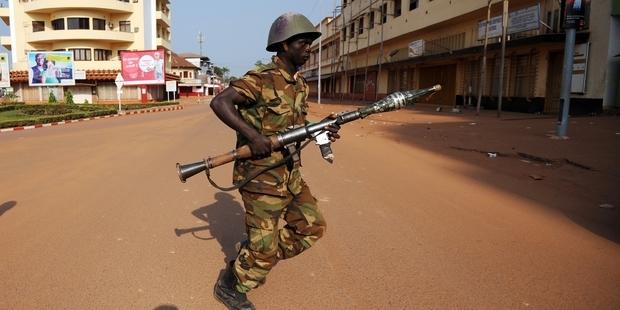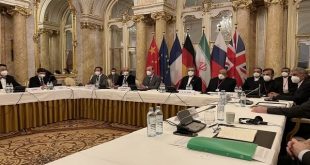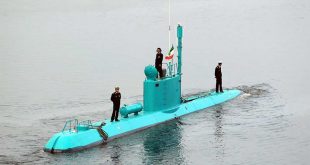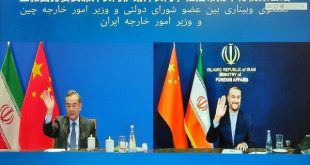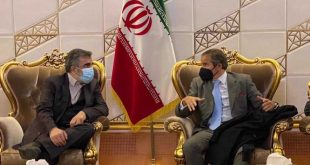Drive north from the capital, and you soon discover why relief workers call the Central African Republic a post-apocalyptic country. After a year of mass murder, the villages are abandoned and the roads eerily empty and desolate.
The checkpoints are controlled by cold-eyed men from largely Christian militias who brandish knives, machetes, swords and other crude weapons. Occasionally, a decrepit taxi comes barrelling down the road, ludicrously overloaded with 15 or 20 refugees, some piled on the roof. At times, a slow-moving convoy appears – busloads of terrified Muslims, with an escort of heavily armed peacekeepers to protect them from slaughter.
hey represent 15 per cent of the country’s 4.5 million people, but even where they were a substantial minority, almost all Muslims have been killed or forced to flee. The last ones in the impoverished town of Boali were removed a month ago, and a local administrator admits it is still too dangerous for her Muslim husband and children to visit, let alone come back for good.
Last year, when largely Muslim rebel forces seized power, it was the Christians who fled for their lives even though the two communities had lived peacefully side by side for decades.
A horrifyingly bureaucratic term, “ethno-religious cleansing,” has been invented to describe the massacres in the CAR. While experts argue over whether it qualifies as genocide, those inside the country know only that the killing is endless. In the capital, Bangui, bodies still pile up in the morgues, mosques and streets.
What began as a political struggle has become sectarian. “One group is trying to exterminate the other,” says Dr. Jean Chrysostome Gody, director of Bangui’s pediatric hospital. “It’s about extreme brutal revenge. They are trying to eradicate a race.”
This wasn’t supposed to happen. “Never again,” the world said after 800,000 died in Rwanda. Yet two decades later – Monday marks the 20th anniversary of the beginning of the 100-day carnage – the killing continues. It continues in terrible wars such as the conflict in Syria, but also much closer to the scene of the tragedy that shocked the world in 1994.
Tens of thousands have been butchered in the CAR as well as its neighbour to the east, South Sudan, where a few months ago a dispute between the president and vice-president erupted into mass bloodshed.
As in Rwanda, politicians and military leaders in both countries have whipped up hatred and turned it deadly. And as in Rwanda, there was plenty of warning. Academics, aid workers and analysts had pointed to the danger signs for months, even years. Yet little was done.
Preventing genocide has been an official goal of the United Nations since 1948 – four years after the term was coined at the height of the Holocaust. Genocide was banned in international criminal law, enforced later by tribunals investigating the mass killings in Rwanda and Darfur. According to the world’s new moral code, enshrined by the UN as the “responsibility to protect” doctrine, any mass atrocity was never to be ignored.
African countries, motivated by altruism but also by a cold calculation of their regional security interests, have sent thousands of peacekeepers to Bangui, including 850 from Rwanda. The European Union’s contribution, however, has been slow to materialize. And Canada, despite its proud tradition of UN service, has refused for years to send substantial forces to any African hot spot.
The current carnage has provoked plenty of high-level hand-wringing. This week, UN Secretary-General Ban Ki-moon fretted that the international community has failed to “prevent the preventable.” And in Brussels, Foreign Affairs Minister John Baird called the CAR a prime example of how efforts to save lives have been “inadequate” and the world “lacking” in resolve.
Why has the response been so minimal?
The bloodshed in South Sudan has left a landscape depressingly similar to that of the CAR. Malakal, the strategic capital of oil-rich Upper Nile province, is now a ghost town of abandoned markets and looted compounds. Thousands have fled, fearing attack by government or rebel forces, while thousands more have taken shelter at the local UN base.
“Many people were killed in front of us,” says Robert Okeng, a 30-year-old student. “The rebels burned our houses and killed many people, even small children. They shot them and beat them with sticks.”
The growing risk of mass violence had been clear for years. A Canadian member of the peacekeeping force, speaking on condition of anonymity, said the UN troops received intelligence briefings last August about the potential for large-scale violence as a result of the deep political split between President Salva Kiir and Vice-President Riek Machar. Similar warnings had been issued privately by relief agencies even earlier, last June, due to tensions in the army, badly divided because regional and tribal militias had been poorly integrated.
Then in July as the feuding intensified, the Sudd Institute, a widely respected think-tank in South Sudan’s capital, Juba, issued a stark warning: “A violent split in the [ruling] party may lead to spontaneous rebellions and possibly a civil war. If the cracks take ethnic lines and violence ensues as a result, the state may become dysfunctional, giving way to a large-scale ethnic violence.”
Instead of heeding these grim warnings, the world clung to the blithe optimism of South Sudan’s birth, when it won independence from Khartoum in 2011 after decades of civil war. It seemed to be an irresistibly happy ending to an often-tragic story.
But there had been warnings signs. Even before South Sudan became the world’s newest independent country. Despite massive support from the United States, Canada and other Western countries, it was a tinderbox. About 2,500 people were killed in inter-communal clashes in 2009, and several armed rebellions erupted in 2010. Corruption was widespread, ethnic resentments were festering, dissent was often crushed rather than addressed, and the military was factionalized on ethnic lines.
Yet, even after the dangerous feuding between the top rulers last year, diplomats failed to apply strong pressure on Mr. Kiir, and the UN did not significantly increase its peacekeeping force of 7,000, far too small for a sprawling country with few paved roads. Large-scale fighting erupted in mid-December, including the deliberate targeting of ethnic groups – exactly as the Sudd Institute had warned just five months earlier – and by January more than 10,000 people had been killed.
“Both sides were preparing for violence – it was just a question of when,” says Abraham Awolich, a policy analyst who helped to found the Sudd Institute. “But nobody paid any attention. It was avoidable, but it slipped away.”
In the Central African Republic, the world has ignored warning signs much longer. This remote corner of Africa has been neglected and persecuted for more than a century, beginning with the slave traders and colonialists who depopulated much of what is now the CAR as forced labour. French colonial policy kept it weak and divided, and further damage was inflicted in the 1970s by the delusional fantasies of the self-proclaimed “emperor” Jean-Bedel Bokassa.
Since 1998, the UN has organized or endorsed an alphabet soup of peacekeeping and peace-building missions, with acronyms from MINURCA to BONUCA to today’s MISCA.
This means that UN officials have been receiving daily “sit-reps” (situation reports) on the country for the past 16 years.
But when the mass killings began last year, the world was unprepared and unable to intervene. Only a few thousand peacekeepers were in the country – not nearly enough to stop the massacres – and most were from neighbouring countries and primarily in the CAR to defend their own national interests, rather than to build a self-sufficient government in Bangui.
“The international community has been watching the CAR for a long time – and not doing much about it,” says David Smith, a Canadian who served on one of the earliest UN missions in the late 1990s.
“There are no surprises in the CAR, only inaction. We’ve sent a lot of people, but we’re not sending them to do the right thing. It’s not just about boots on the ground – it’s about nation-building.”
Because of a lack of personnel and resources, the UN peacekeepers could do little more than patrol the streets, observe the clashes and guard the key buildings. What was badly needed was a bigger long-term commitment, in order to create a proper army and police force, build a functioning justice system and rescue a failed state.
The violence escalated last March, when the rebels swept into Bangui, and has continued, on and off, in plain sight of the foreign observers, diplomats, peacekeepers and aid workers.
The disaster can even be seen from the air. Satellite photos show the destruction of villages and a massive camp for displaced people has sprung up on the edge of Bangui’s international airport – clearly visible to passenger jets that arrive every day. Not even a fence separates the planes from the estimated 60,000 people who live in appalling conditions, with children routinely dying of easily preventable diseases.
“They don’t die of bullets – they die because of a lack of will to help them,” says Dr. Tahir Wissanji of Médecins sans frontières (Doctors Without Borders) who worked in Bangui for two months. “This isn’t a situation where people can say, ‘Oh, we didn’t know.’ They’re at the airport when you land. You can’t miss them.”
The camp gets so little support that many residents don’t even have tents. “We have to use palm leafs,” says Joseph Mboris, a 54-year-old teacher who has been there since December. “When the rain falls, it’s terrible.”
Mr. Mboris onced lived side by side with Muslim friends and neighbours. Now the neighbours have lost contact and the friendships destroyed. “Things have become like that,” he says. “It’s too dangerous to go home. People have taken up machetes, and they want revenge.”
Four days before Christmas, his pregnant daughter’s husband was caught and killed by a local militia when he went home to collect their belongings. “He was too young to die,” Mr. Mboris says. Eight days later, his daughter gave birth to son who will never know his father.
The UN high commissioner for human rights, Navi Pillay, visited the Central African Republic late last month, and says she is deeply concerned by the slow response of the international community, which so far has provided only one-fifth of the funds needed.
The world seems to have forgotten the lessons of Rwanda, she told reporters in Bangui. “I cannot help thinking that, if the Central African Republic were not a poor country hidden away in the heart of Africa, the terrible events that have taken place – and continue to take place – would have stimulated a far stronger and more dynamic reaction.
“How many more children have to be decapitated, how many more women and girls will be raped, how many more acts of cannibalism must there be, before we really sit up and pay attention?”
MSF is one of the biggest aid agencies on the ground, and Joanne Liu, its international president, says years of struggling to call attention to the disaster have produced no “traction.”
“A lot of people say they don’t even know where the CAR is – it’s always been a second-class crisis,” Dr. Liu says, noting that the country has few people and few natural resources.
And what could have been done?
In both CAR and South Sudan, the world had leverage if it had wanted to act: There were peacekeepers in position, diplomats watching, and United Nations operations on the ground. As well , both countries were recipients of foreign aid, another potential tool to influence key players.
As the atrocities mounted in the CAR, foreign armies eventually responded, but never with an adequate effort. There are about 8,000 French and African peacekeeping troops there today – not enough to stop the killings or disarm the militias or prevent the “ethno-religious cleansing.” The European Union has promised another 1,000 troops but its commitment has wavered after the Ukraine crisis and its troops repeatedly delayed.
The UN estimates that a force of at least 12,000 – including 2,000 police – is needed in CAR alone. But even this is probably far too few: On a per capita basis, it is barely one-tenth the number of peacekeepers sent to Bosnia and Kosovo.
The UN doesn’t deserve all the blame. Countries like Canada, active supporters of peacekeeping until the past decade or so, have failed to make more than a token contribution. Even modest assistance – helicopters, communications equipment, airlift or other resources – could make a substantial difference.
If the problem in CAR is sheer neglect because it lacks strategic importance, South Sudan is more complex. The West has never neglected the newly independent country, providing much aid and other support. If anything, it was over-confident in South Sudan’s capacity to avoid mass violence, and failed to pressure the government to prevent it.
Conversations with South Sudanese political leaders and human-rights activists make it clear that they were fully aware of the dangerous splits in the army and the repressive tactics that were inflaming tensions. Yet donor nations essentially gave the government “a blank cheque,” one aid worker says, admitting that “maybe we could have been tougher.”
Deng Athuai Mawiir, a Canadian citizen who heads the South Sudan Civil Society Alliance, was kidnapped and beaten for three days in 2012 after he organized a march to demand action against 75 officials suspected of involvement in a $4-billion corruption scandal.
He says the military’s heavy involvement in politics is crucial to the persistent repression. “You can’t fire people in the ministries because you’re afraid the soldiers from their region will kill you. They are hungry for the war to continue, because they want to keep their positions forever. Everyone is hungry for power, and they don’t want to hear any opposition.”
When the rebellion erupted and the slaughter began, the international response – just like in the CAR – was too little and too late. In key cities like Malakal, the UN peacekeepers could do little more than protect VIPs and guard their base. This allowed the rebels and army to keep fighting, with hundreds of deaths over a period of weeks. The Canadian peacekeeper recalls how ending up flat on the ground in a bunker, trying to escape a hail of bullets from both the rebels and government forces.
There is no sign of a rapprochement between Mr. Kiir and Mr. Machar, and their followers. The tensions between the feuding leaders and the two main ethnic groups, the Dinka and the Nuer, will fuel the risk of mass violence for years to come.
Is it too late to act? The clashes in South Sudan and the CAR have left such deep social wounds and such yearning for vengeance that it will be nearly impossible to prevent further massacres – unless there is a huge ramping-up of the peacekeeping effort.
The killing could also heighten the danger that both countries will plunge back into dictatorship. It was the genocide in Rwanda, and the world’s inaction in the sight of the genocide, that paved the way for the iron-fisted regime of President Paul Kagame, who tolerates no dissent.
At Dr. Gody’s hospital in Bangui, injured Muslim and Christian children lay side-by-side, united by their pain. Yet their parents can barely conceal their rage against people who were once their neighbours.
“We can’t live together again,” says Stella, 22. Her uncle was killed by Muslim rebels and her infant son later hit by a stray bullet.
“I consider the Muslims my enemies now,” she confesses as she tends to her bandaged child. “ If my life is worse, it is because of them.”
It’s a long way from the horrors of Bangui to a bland conference hall in Brussels, where Canada’s foreign minister was lecturing on genocide prevention this week.
“As leaders, this is our time,” Mr. Baird said in Brussels. “Let us not look back when it’s too late and wonder if we really did enough.”
His speech was an echo of the burning questions that tormented the world after Rwanda. It’s an extraordinary irony that the same questions are still being asked 20 years later.
CONVENTIONAL TACTICS
Since coming to the fore in the aftermath of the Holocaust, the United Nations has taken measures to anticipate and, in theory, thwart genocide.
1948: The Convention on the Prevention and Punishment of the Crime of Genocide is passed, since ratified by 144 nations including Canada (1952) and the U.S. (46 years later).
2004: A decade after Rwanda, a special adviser is appointed to collect information on “massive and serious violations of human rights and international humanitarian law” and be “a mechanism of early warning.” The post’s first full-time occupant (2007-2012) is from South Sudan.
2008: An associate adviser is appointed to focus on the UN’s subsequent edict that all states must actively protect their citizens “from genocide, war crimes, ethnic cleansing and crimes against humanity.”
2013: The task is given to Jennifer Welsh, a Canadian specialist in international affairs and ethics then teaching at Oxford.
The cutting edge
More recently, science and technology have been recruited to the cause.
Mathematics: Australian researchers have developed a math-based model using variables ranging from political assassinations to a high rate of infant mortality (which shows state institutions have broken down). In 2012, they compiled a list of high-risk countries led by the Central African Republic, until then on no one’s radar.
Database: A Swiss sociologist has sifted through a century of news articles to develop a system for predicting when war will break out – between countries and within them.
Software: Duke University researchers have designed a computer program they say can be used to forecast insurgencies.
Tweet tips: A team assembled by the Holocaust Museum is mining hate speech on Twitter as a way to anticipate outbreaks of political violence. It will be rolled out next year for the elections in Nigeria, which have frequently been marred by violence. Developed by a professor at the Georgia Institute of Technology, the Twitter tool will operate in real time, and Nigeria has agreed to let researchers be in election security headquarters when voters go to the polls, mining social media for hate speech – smoke signals that may help authorities nip violence in the bud.
 WILAYAH NEWS VOICE OF THE GLOBAL AWAKENING
WILAYAH NEWS VOICE OF THE GLOBAL AWAKENING

